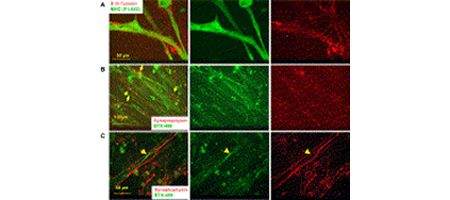Researchers have for the first time used stem cells to grow neuromuscular junctions between human muscle cells and human spinal cord cells – the key connectors used by the brain to communicate and control muscles in the body.

The University of Central Florida team collected muscle stem cells via biopsy from adult volunteers. They then explored different concentrations of cells and timescales, among other parameters, before hitting on the right conditions to make the muscle and spinal cord cells join and form working junctions.
The researchers say it’s a major step towards the development of ‘human-on-a-chip’ systems that could recreate how organs or a series of organs function in the body.
Their use could accelerate the typically ten-year process needed for drugs to go through animal and patient trials.
“These types of systems have to be developed if you ever want to get to a human-on-a-chip that recreates human function,” says James Hickman, a UCF bioengineer who led the research. “It’s taken many trials over a number of years to get this to occur using human derived stem cells.”
Several federal agencies recently launched a plan to jump-start research in ‘human-on-a-chip’ models by making available at least $140 million in grant funding.
The aim is to produce systems that include various miniature organs connected in realistic ways to simulate human body function. This would make it possible, for instance, to test drugs on human cells well before they could safely and ethically be tested on living humans.
The technique could potentially be more effective, as well as quicker, than testing in mice and other animals.
“Right now we rely a lot on animal systems for medical research but this is a pure human system,” says research professor Nadine Guo. “This work proved that, biologically, this is workable.”






